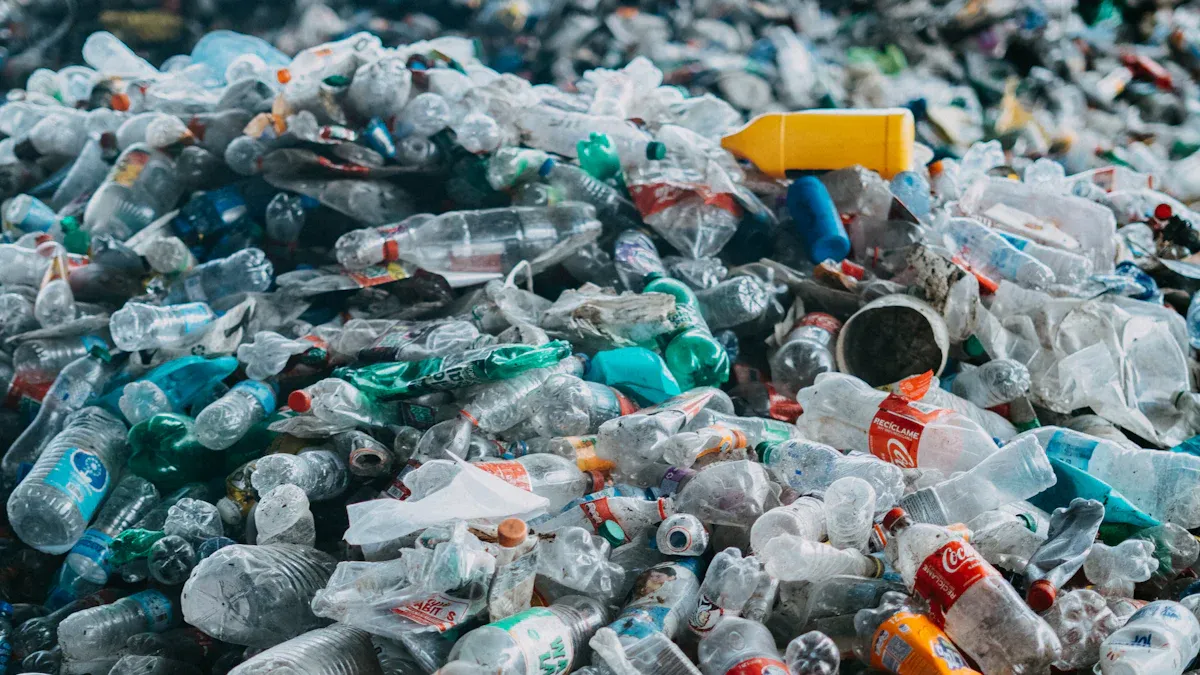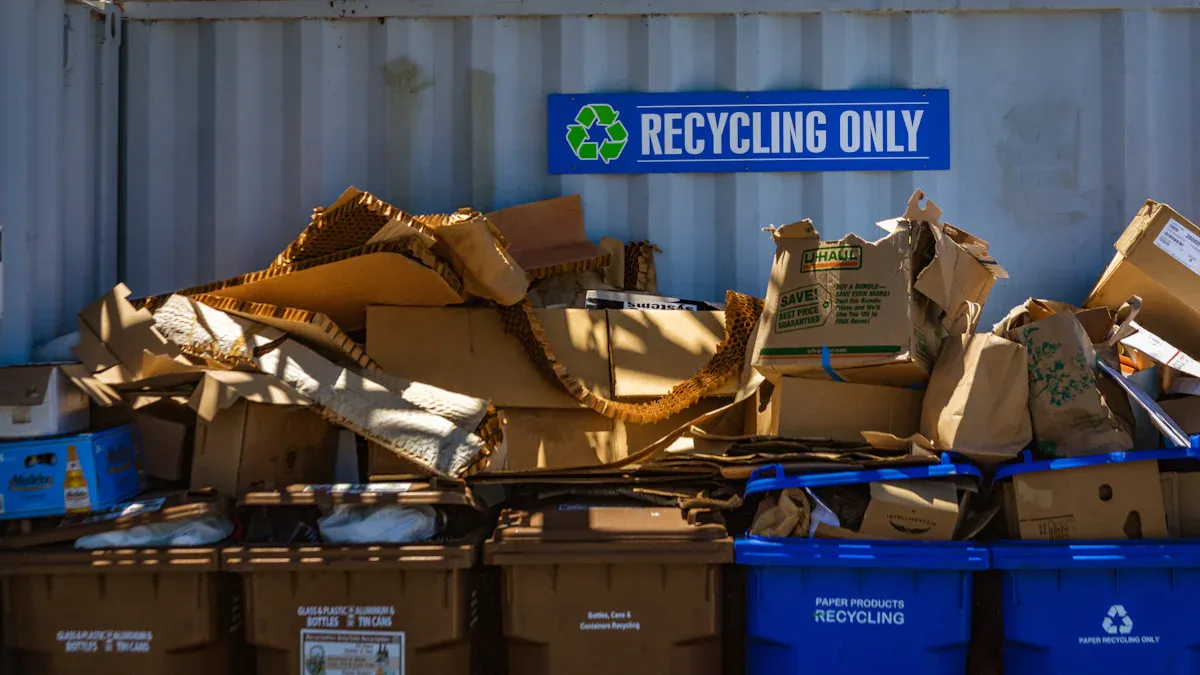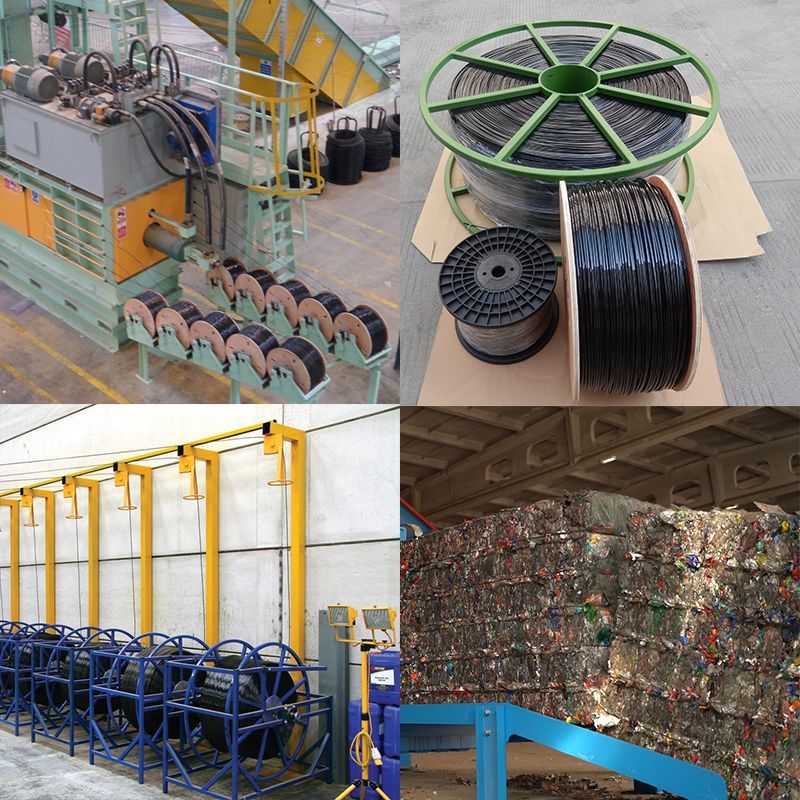Plastic Baling Wire lets waste-to-energy plants load baled waste straight into incinerators. Operators skip the time-consuming task of wire removal. Facilities see faster processing, less manual work, and fewer delays. Environmental compliance improves as burning plastic wire leaves no steel residue. Plants in 2025 trust this solution for reliable operations.
Key Takeaways
- Plastic Baling Wire lets plants load waste bales directly into incinerators, saving time and cutting labor by removing the need to take out steel wires.
- The wire burns completely with the waste, leaving no metal residue, which helps plants meet strict environmental rules and avoid costly fines.
- Using Plastic Baling Wire improves bale strength, fits existing equipment, reduces machine downtime, and boosts overall productivity and safety.
Plastic Baling Wire: Addressing Incineration Challenges
Eliminating Wire Removal and Contamination
Waste-to-energy plants often face delays when workers must remove steel wires from waste bales before incineration. This step slows down the process and increases labor costs. Plastic Baling Wire changes this routine. Operators can load bales directly into the furnace. The wire burns safely with the waste, leaving no steel residue behind. This feature helps facilities avoid contamination in the ash and reduces the risk of equipment damage from leftover metal. Many European incinerators now require the removal of steel wire, but Plastic Baling Wire meets these standards without extra steps.
Tip: Using a fully combustible baling wire helps plants avoid costly penalties for steel contamination.
Enhancing Bale Integrity and Equipment Compatibility
Strong bale integrity is essential for safe handling and efficient processing. The JUDIN Plastic Baling Wire for RDF uses durable PET material. This wire holds bales tightly, even under heavy loads. Its tensile strength matches that of low-tensile steel wire, so operators can trust it to keep bales secure during transport and storage. The wire works well with specialized baling equipment, including proprietary feed frames. This compatibility means operators do not need to change their existing systems. They can switch to Plastic Baling Wire without major adjustments.
- PET construction ensures high break strength.
- The wire fits standard and specialized balers.
- Operators can handle bales with confidence.
Reducing Equipment Downtime
Equipment downtime can disrupt waste-to-energy operations. Traditional steel wire often causes jams or damage if not removed before incineration. Plastic Baling Wire eliminates this risk. Since the wire burns away with the waste, there is no need to stop machines for cleaning or repairs due to wire remnants. Plants experience fewer interruptions and maintain steady throughput. The wire’s design also allows for longer reel lengths, so operators spend less time changing reels and more time processing waste.
Note: Consistent operation leads to higher productivity and lower maintenance costs.
Operational Benefits of Plastic Baling Wire in 2025
Increased Throughput and Labor Savings
Waste-to-energy plants see faster processing when they use Plastic Baling Wire. Workers do not need to remove wire from bales before incineration. This change saves time and reduces manual labor. Operators can process more waste each day. Plants also benefit from longer reel lengths, which means fewer stops to change reels.
- Plants process more bales per hour.
- Labor costs drop because workers spend less time on each bale.
- Operations run smoothly with less interruption.
Tip: Facilities that switch to Plastic Baling Wire often report a 20% increase in daily throughput.
Enhanced Worker Safety and Environmental Compliance
Plastic Baling Wire helps create a safer workplace. Workers avoid handling sharp steel wires, which lowers the risk of cuts and injuries. The wire burns away during incineration, so it does not leave metal residue. This feature helps plants meet strict environmental rules. Many European incinerators now require no steel in waste bales. Plants using this wire stay compliant and avoid costly fines.
| Benefit | Impact on Operations |
|---|---|
| No sharp steel wires | Fewer worker injuries |
| Fully combustible | Cleaner ash, no steel left |
| Meets EU standards | Avoids penalties |
Real-World Results and Implementation Tips
Many facilities have already adopted Plastic Baling Wire. They report smoother workflows and better productivity. Operators find the wire easy to use with existing balers. For best results, plants should:
- Train staff on proper wire handling.
- Use compatible feed frames for efficient reel changes.
- Monitor bale integrity during the transition period.
Note: Early adopters often see quick returns on investment due to labor savings and improved compliance.
- Plastic Baling Wire solves key incineration challenges for waste-to-energy plants.
- Facilities in 2025 see higher productivity, safer workplaces, and better sustainability.
- Forward-thinking operators choose this solution for streamlined operations and long-term savings.
Plants that invest in innovation lead the industry.
FAQ
What makes JUDIN Plastic Baling Wire suitable for incineration?
JUDIN Plastic Baling Wire burns completely with waste. It leaves no steel residue and adds calorific value, making it ideal for waste-to-energy plants.
Tip: Operators can load bales directly into the furnace.
Can existing balers use JUDIN Plastic Baling Wire?
Most modern balers accept JUDIN Plastic Baling Wire. The wire fits standard and proprietary feed frames, so facilities do not need major equipment changes.
| Bale Type | Compatibility |
|---|---|
| Standard RDF | yes |
| Specialized SRF | yes |
Does plastic baling wire help meet EU environmental standards?
Yes. The wire eliminates steel contamination and supports compliance with strict EU incineration rules. Facilities avoid penalties and improve environmental performance.
Post time: Jun-27-2025










